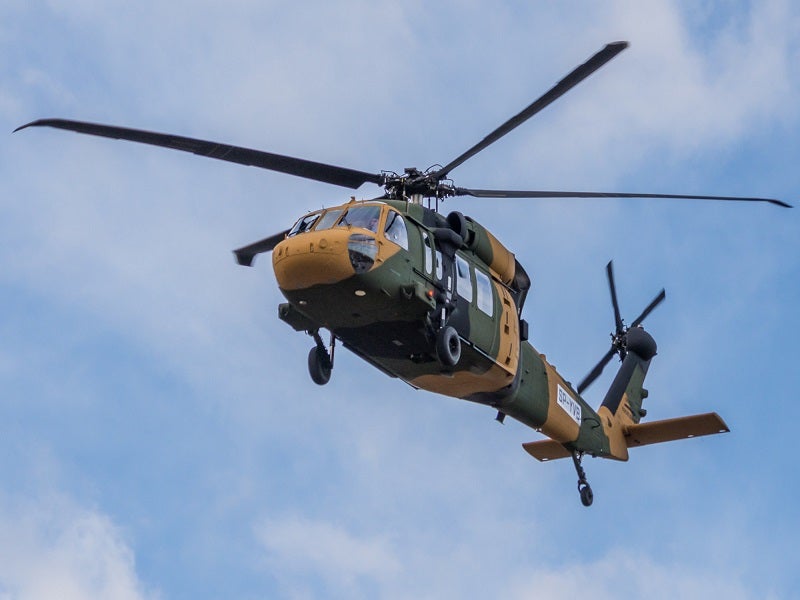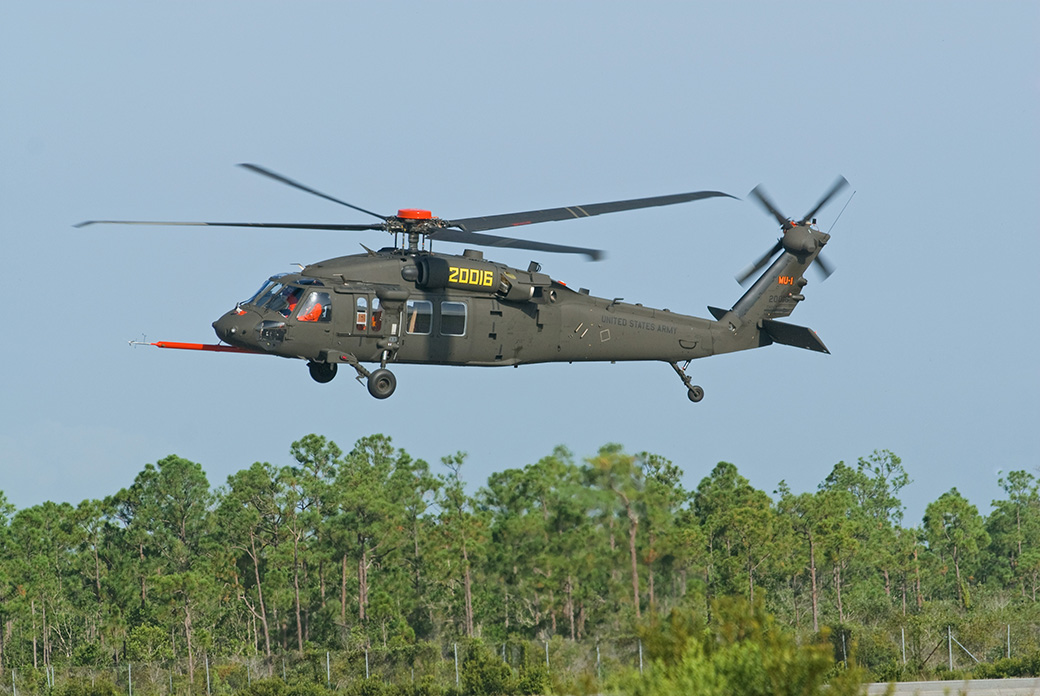Inside the Sikorsky S 70: What Sets This Helicopter Apart from Its Rivals
Inside the Sikorsky S 70: What Sets This Helicopter Apart from Its Rivals
Blog Article
High-Performance Multi-Role Rotorcraft Featuring Advanced Cabin Technologies and Integrated Sensor Solutions
The realm of rotorcraft technology has actually seen noteworthy improvements in recent times, specifically in the world of high-performance multi-role rotorcraft equipped with sophisticated cockpit modern technologies and seamlessly incorporated sensing unit systems. These developments have not just augmented the functional capacities of rotorcraft but have actually also considerably affected modern-day aviation operations on numerous fronts. From boosted objective adaptability to improved operational effectiveness, the merging of sophisticated cabin modern technologies and incorporated sensor systems has actually ushered in a brand-new era of possibilities for rotorcraft applications. In the adhering to conversation, we will certainly discover the evolution of rotorcraft modern technology, look into the realm of advanced cockpit advancements, and take a look at the effects of integrated sensing unit systems on the operational convenience and efficiency of modern rotorcraft.
Development of Rotorcraft Innovation
The development of rotorcraft innovation has been marked by considerable innovations in aerodynamics, materials, and propulsion systems, forming the capabilities and performance of modern-day rotorcraft. Additionally, improvements in propulsion systems, including a lot more powerful engines and innovative propulsion modern technologies, have actually enabled rotorcraft to accomplish higher altitudes, faster speeds, and higher hauls.
These innovations have not just changed the abilities of rotorcraft but have likewise expanded their applications across different markets, consisting of military, industrial, and emergency services. The constant evolution of rotorcraft modern technology continues to drive advancement in the area, pushing the limits of what is possible and shaping the future of upright trip.
Advanced Cockpit Innovations
Building upon the fundamental developments in aerodynamics, products, and propulsion systems, the realm of rotorcraft modern technology now changes emphasis towards pioneering Advanced Cabin Innovations. The integration of cutting-edge modern technologies within the cabin atmosphere plays a vital duty in boosting the operational capabilities, safety, and efficiency of contemporary rotorcraft. sikorsky s 70. Advanced Cockpit Innovations include a broad variety of features made to supply pilots with boosted situational awareness, structured information administration, and instinctive control interfaces
One of the essential innovations in cockpit style is the execution of glass cockpits, which change traditional analog gauges with high-resolution screens. These electronic systems provide customizable formats, real-time data assimilation, and boosted readability, allowing pilots to access essential info at a glimpse. Moreover, progressed avionics systems, such as fly-by-wire controls and enhanced reality displays, are changing exactly how pilots engage with the airplane, enabling for precise control and enhanced decision-making capacities.


Including sophisticated cockpit advancements not only enhances pilot efficiency however also adds to general mission performance and safety and security in intricate operational settings. By leveraging advanced technologies within the cabin, rotorcraft manufacturers are setting new requirements for operational excellence and mission success.
Integrated Sensing Unit Equipments
With the advancement of rotorcraft modern technology, the integration of sophisticated Integrated Sensing unit Solution has actually ended up being paramount in improving operational efficiency and safety. These Integrated Sensor Systems encompass a broad array of technologies that supply vital information for different features such as navigating, surveillance, targeting, and ecological monitoring. By flawlessly incorporating sensing units like radars, video cameras, lidar, and infrared systems into rotorcraft, drivers can gain from improved situational awareness, improved goal abilities, and decreased pilot work.
One secret advantage of Integrated Sensing unit Equipments is their capacity to gather real-time data and give actionable insights to pilots and objective operators. For instance, progressed radar systems can identify and track targets over long ranges, allowing for early threat discovery Learn More and effective response preparation. Additionally, integrating electro-optical and infrared cams allows rotorcraft to conduct reconnaissance and surveillance missions with precision and precision.
In significance, the combination of sophisticated sensing unit technologies right into rotorcraft not only enhances functional efficiency but additionally contributes dramatically to overall objective success and staff security. As rotorcraft remain to advance, the role of Integrated Sensor Systems will undoubtedly continue to be at the leading edge of advancement in the aerospace sector.
Functional Flexibility and Efficiency
Enhancing operational convenience and efficiency in rotorcraft is a natural development from the combination of advanced Integrated Sensing unit Solutions. By leveraging the information and insights provided by these sophisticated sensing unit systems, rotorcraft can enhance their efficiency across numerous goals and environments.
Functional versatility includes the ability of rotorcraft to adapt to different duties and situations successfully. With advanced cockpit modern technologies and incorporated sensing unit systems, rotorcraft can seamlessly shift in between tasks such as search and rescue, clinical discharge, monitoring, and more. This versatility boosts the rotorcraft's capability to satisfy varied operational needs without needing substantial reconfiguration.
Efficiency in rotorcraft operations is vital for making the most of goal efficiency and resource usage. Integrated sensor systems play a crucial function in enhancing operational efficiency by offering real-time information on weather, surface mapping, target monitoring, and more. This information makes it possible for pilots to make informed choices swiftly, optimize flight paths, preserve fuel, and improve general goal efficiency.
Effect On Modern Air Travel Procedures

Moreover, the assimilation of advanced sensors promotes enhanced goal planning and implementation, allowing rotorcraft to perform a wide variety of jobs with improved precision. From search and rescue procedures to aerial firefighting and police objectives, the abilities of contemporary rotorcraft equipped with sophisticated cabin innovations and incorporated sensing unit systems are exceptional.
Additionally, the effect of these improvements prolongs past functional performance to cost-effectiveness and why not try here sustainability. By maximizing trip paths, gas usage, and maintenance routines, high-performance rotorcraft outfitted with advanced cabin innovations and sensors contribute to minimizing functional costs and environmental influence, making them indispensable assets in modern-day aeronautics operations.
Verdict
To conclude, the high-performance multi-role rotorcraft with sophisticated cockpit innovations and integrated sensor systems represents a substantial development in aviation technology. These technologies enhance operational versatility and effectiveness, inevitably affecting contemporary air travel operations in a favorable means. The integration of these sophisticated technologies permits improved abilities and performance in different goal situations, showcasing the proceeded advancement of rotorcraft modern technology in the aviation sector.
The world of rotorcraft technology has actually seen noteworthy improvements in current times, especially in the realm of high-performance multi-role rotorcraft furnished with sophisticated cockpit technologies and perfectly integrated sensor systems. From boosted objective adaptability to enhanced operational effectiveness, the merging of sophisticated cockpit innovations and incorporated sensing unit systems has ushered in a new period of possibilities for rotorcraft applications. In the adhering to discussion, we will discover the development of rotorcraft technology, dig right into the world of advanced cockpit advancements, and examine the effects of integrated sensor systems on the functional convenience and efficiency of modern rotorcraft.

Report this page